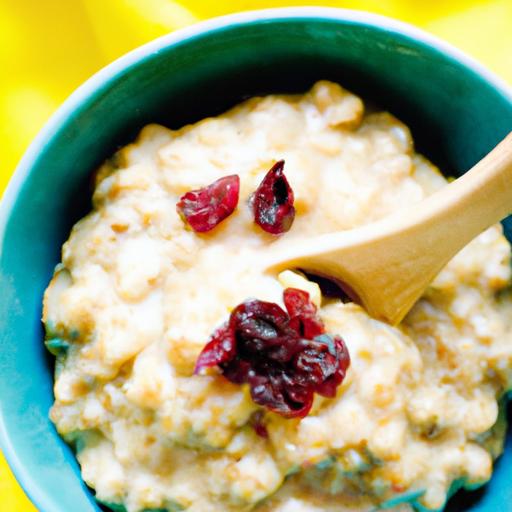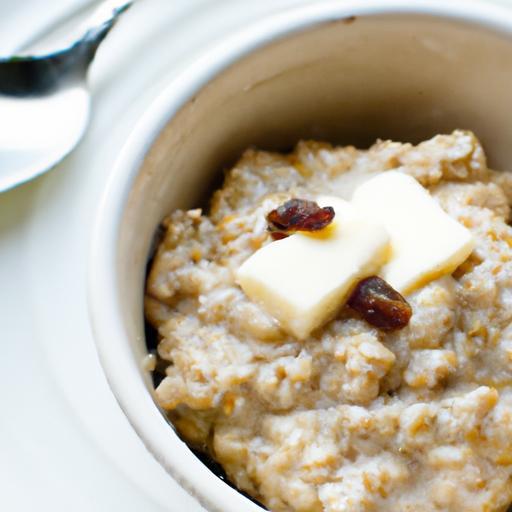There’s a simple kitchen battle many of us face each morning: the stubborn pot of oatmeal that insists on boiling over, flooding the stove with sticky, gooey mess. It’s frustrating, it’s wasteful, and it can turn a peaceful breakfast ritual into a stressful scramble. But what if mastering the art of cooking oatmeal without that chaotic overflow was as easy as a few smart tweaks? In this article, we’ll uncover the secrets to keeping your oatmeal perfectly contained, so you can savor every spoonful without the splashy aftermath. Get ready to take control of your stovetop and transform your breakfast routine-because no one should lose the oatmeal war before the day even begins.
Understanding Why Oatmeal Boils Over and Common Mistakes to Avoid
Master the Art: Stop Oatmeal from Boiling Over Easily starts with understanding the science behind why oatmeal tends to spill over your stovetop. When rolled oats or steel-cut oats heat, the starches swell and create foamy bubbles. If the heat is too high or the pot too small, the bubbling foam quickly escapes the pot’s rim, causing an annoying mess. A common mistake is rushing the cooking process with high heat, which agitates the starch and causes excessive bubbling. Another frequent error is using a shallow or narrow pot that doesn’t allow room for the oatmeal to expand.
Choosing the Right Pot and Heat Settings for Perfectly Controlled Cooking
Capacity and shape matter: a heavy-bottomed, wide pot is your best ally. The heavy base ensures even heat distribution, preventing sudden temperature spikes that trigger boil-overs. The wide circumference offers breathing room for the oats to bubble before reaching the edge. When it comes to heat, start with medium heat to bring oatmeal to a gentle simmer. As soon as it bubbles, immediately reduce to low heat and stir frequently. This controlled simmering breaks bubbles and tames the foam. Avoid absent-mindedly leaving the pot unattended; oatmeal’s natural starch content demands attentive stirring to keep simmering calm.
Simple Techniques and Tools to Keep Your Oatmeal Calm and Mess-Free
Small adjustments make a big difference in preventing boil-overs. Adding a wooden spoon laid across the pot’s top is a classic chef’s hack-it disrupts bubbles and prevents them from spilling over. Using a larger pot lid slightly ajar lets steam escape, reducing pressure build-up. Stirring with a silicone spatula every 30 seconds eases the starch’s thickening power. Another helpful gadget is a double boiler or a slow cooker insert – these offer lower, more consistent heat. For those who love precision, a simmer ring can be placed on the burner to reduce heat intensity and protect your oatmeal from an aggressive boil.
Creative Flavor Boosters to Add After You Master the Boil Over Battle
Once you’ve mastered the art of stopping oatmeal from boiling over easily, the fun really begins! Personalize your creamy bowl with an array of delicious mix-ins. Sweeten naturally with maple syrup, honey, or brown sugar, then add texture with toasted nuts, dried fruit, or fresh berries. Elevate the aroma with a sprinkle of cinnamon, nutmeg, or vanilla extract. For a savory twist, try stirring in soft cheese, sautéed greens, or a dash of smoked paprika. A splash of plant-based milk or coconut cream adds extra richness and a velvety finish. These finishing touches let your oatmeal shine and transform each bite into a comforting masterpiece.
Prep and Cook Time
- Preparation Time: 5 minutes
- Cooking Time: 15-20 minutes
Yield
Serves 2 generous bowls
Difficulty Level
Easy to Medium – Ideal for beginners who want foolproof results with room to experiment.
Ingredients
- 1 cup rolled oats (old-fashioned, not instant)
- 2 ½ cups water or milk (for creamier texture)
- ¼ teaspoon salt
- 1 tablespoon butter or coconut oil (optional, for richness)
- Sweeteners and toppings of your choice: fresh fruit, nuts, seeds, honey, maple syrup, cinnamon
Instructions
- Bring the water or milk to a gentle boil in a wide, heavy-bottomed pot over medium heat.
- Add the rolled oats and salt and immediately reduce the heat to low.
- Place a wooden spoon across the pot’s rim to prevent foam from spilling over.
- Stir the oats gently every 30 seconds with a silicone spatula to break bubbles and ensure even cooking.
- Cook uncovered on low heat for 15 to 20 minutes, until the oats have absorbed most of the liquid and reached desired creaminess.
- Remove from heat, stir in butter or coconut oil if using, for a glossy finish and enhanced flavor.
- Let sit for a minute to thicken further, then transfer to bowls and top with your favorite flavor boosters.
Chef’s Notes
- Substitutions: Steel-cut oats can be used but will require longer cooking times and even more attentive heat control.
- Make-ahead tip: Cook extra oatmeal and refrigerate. Reheat with a splash of milk, stirring to restore creaminess.
- Flavor variations: Infuse your cooking liquid with cinnamon sticks or cardamom pods for warming spice notes.
- Troubleshooting: If you notice persistent boiling over, lower your heat earlier in the cooking process and stir more frequently.
Serving Suggestions
For breakfast elegance, serve oatmeal topped with sliced ripe bananas, toasted walnuts, and a drizzle of honey. Garnish with a light dusting of cinnamon powder and a dollop of Greek yogurt for creaminess. For a vibrant tropical twist, pile on mango cubes, shredded coconut, and a squeeze of fresh lime juice. Pair with a warm cup of herbal tea or freshly brewed coffee to complete your cozy meal. Presentation-wise, use rustic ceramic bowls to contrast the creamy texture and bring warmth to your breakfast table.
| Nutrition per Serving | Amount |
|---|---|
| Calories | 220 kcal |
| Protein | 6 g |
| Carbohydrates | 38 g |
| Fat | 4 g |
Discover more oatmeal mastery tips here or visit Bob’s Red Mill Steel Cut Oatmeal Recipes for expert insights.

Q&A
Q&A: Master the Art – Stop Oatmeal from Boiling Over Easily
Q1: Why does oatmeal often boil over so quickly?
A1: Oatmeal is a bit of a bubbly troublemaker! As it heats, the starches in oats release and create a frothy foam. This foam traps steam bubbles that grow and expand, causing the pot to overflow if unattended. It’s nature’s way of saying, “I’m cooking up a storm!”
Q2: What’s the simplest trick to prevent oatmeal from boiling over?
A2: The classic spoon trick! Place a wooden spoon across the top of your pot. The spoon pops the bubbles as they rise, breaking their surface tension and preventing that messy spillover. It’s like having a tiny bubble bouncer for your stove.
Q3: Does the type of oats affect the boiling-over tendency?
A3: Absolutely! Instant oats tend to foam up faster since they’re finer and release starch quickly. Steel-cut oats are heartier, releasing less foam, so they’re less likely to overflow, but they also take longer to cook.
Q4: How about controlling the heat? Can that help?
A4: Patience is key! Start oatmeal on medium-low heat and stir regularly. High heat agitates the mixture, making the froth jump out of the pot faster. Gradual warming leads to a calmer boil and a happy stovetop.
Q5: Are there any clever kitchen hacks besides the wooden spoon?
A5: Certainly! Try reducing the pot size-cook oatmeal in a pot with plenty of headspace. Adding a tiny bit of butter or oil can also reduce surface tension, taming the frothy bubbles. And if you’re a fan of science, a dash of cold water added mid-cooking can temporarily calm the pot’s bubbling enthusiasm.
Q6: Can stirring really make a difference?
A6: It sure does! Stirring redistributes heat and breaks up foam bubbles, keeping the oatmeal evenly cooked and contained. But don’t overdo it-gentle, consistent stirring is your best call.
Q7: What’s the key takeaway for a perfect, spill-free oatmeal?
A7: Combine slow, steady heat, a trusty wooden spoon, a dash of patience, and a little stirring magic. Master this combo, and your oatmeal will cook peacefully, fitting snugly inside your pot-no floods, no fuss, just breakfast bliss.
Wrapping Up
In the quest to perfect your morning ritual, mastering the art of stopping oatmeal from boiling over is a small yet transformative victory. With a pinch of patience, a splash of technique, and a sprinkle of the tips shared here, you can say goodbye to messy stovetops and hello to a smooth, creamy bowl every time. So next time you hear that bubbling crescendo, you’ll know exactly how to keep control-turning a simple breakfast staple into a stress-free start to your day. Happy stirring and even happier sipping!


